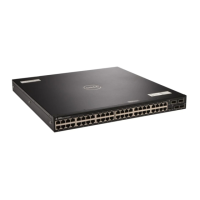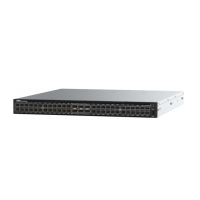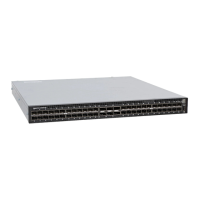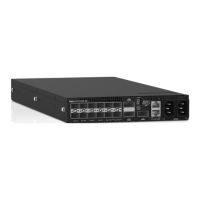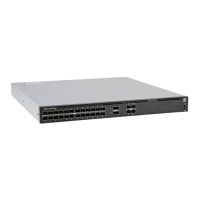Changing OSPFv3 Session Parameters
Congure BFD sessions with default intervals and a default role.
The parameters that you can congure are: desired tx interval, required min rx interval, detection multiplier,
and system role. Congure these parameters for all OSPFv3 sessions or all OSPFv3 sessions on a particular interface. If you change a
parameter globally, the change aects all OSPFv3 neighbors sessions. If you change a parameter at the interface level, the change aects
all OSPFv3 sessions on that interface.
To change parameters for all OSPFv3 sessions or for OSPFv3 sessions on a single interface, use the following commands.
To view session parameters, use the show bfd neighbors detail command.
• Change parameters for all OSPFv3 sessions.
ROUTER-OSPFv3 mode
bfd all-neighbors interval milliseconds min_rx milliseconds multiplier value role [active |
passive]
• Change parameters for OSPFv3 sessions on a single interface.
INTERFACE mode
ipv6 ospf bfd all-neighbors interval milliseconds min_rx milliseconds multiplier value role
[active | passive]
Disabling BFD for OSPFv3
If you disable BFD globally, all sessions are torn down and sessions on the remote system are placed in a Down state.
If you disable BFD on an interface, sessions on the interface are torn down and sessions on the remote system are placed in a Down state.
Disabling BFD does not trigger a change in BFD clients; a nal Admin Down packet is sent before the session is terminated.
To disable BFD sessions, use the following commands.
• Disable BFD sessions with all OSPFv3 neighbors.
ROUTER-OSPFv3 mode
no bfd all-neighbors
• Disable BFD sessions with OSPFv3 neighbors on a single interface.
INTERFACE mode
ipv6 ospf bfd all-neighbors disable
Congure BFD for IS-IS
When using BFD with IS-IS, the IS-IS protocol registers with the BFD manager on the RPM. BFD sessions are then established with all
neighboring interfaces participating in IS-IS. If a neighboring interface fails, the BFD agent on the line card noties the BFD manager, which
in turn noties the IS-IS protocol that a link state change occurred.
Conguring BFD for IS-IS is a two-step process:
1 Enable BFD globally.
2 Establish sessions for all or particular IS-IS neighbors.
162
Bidirectional Forwarding Detection (BFD)

